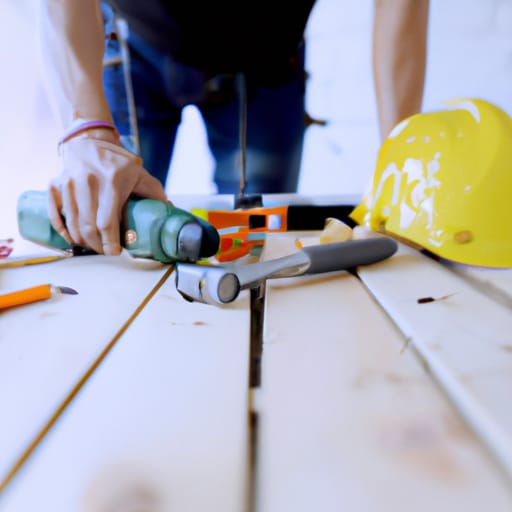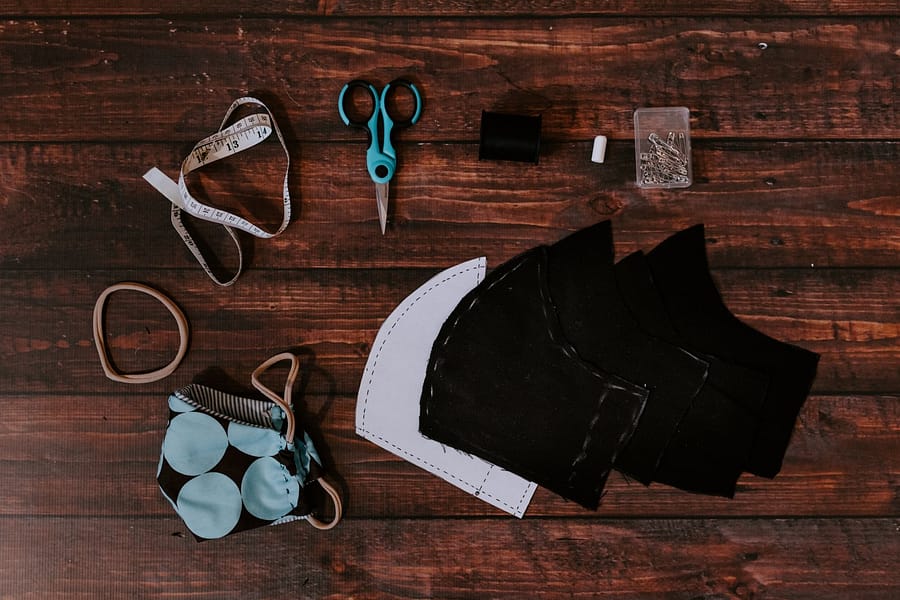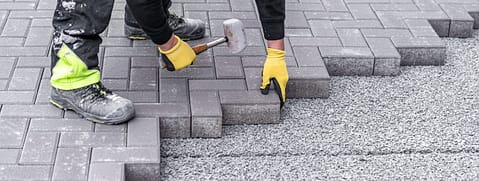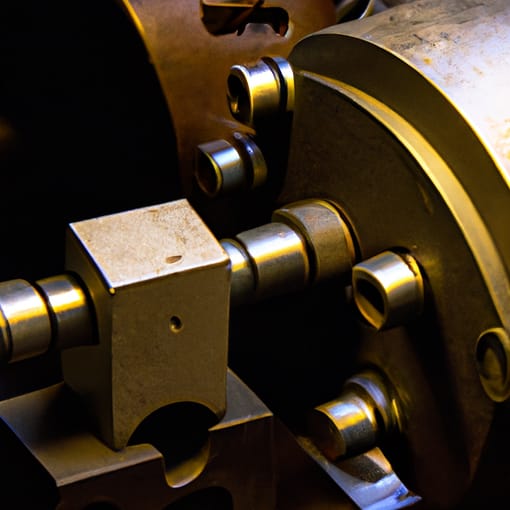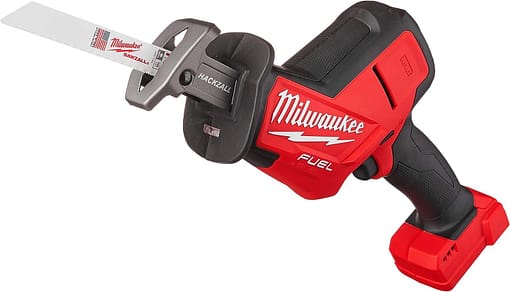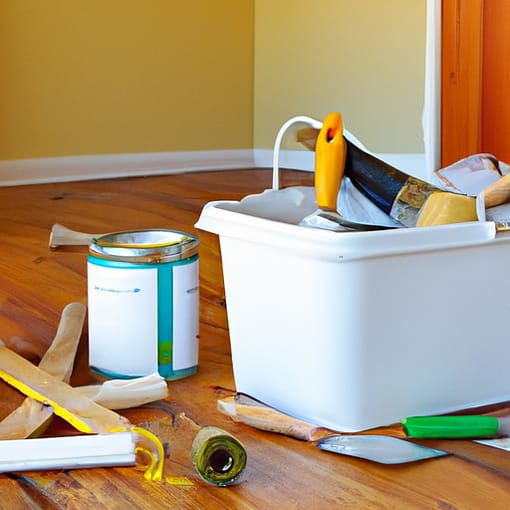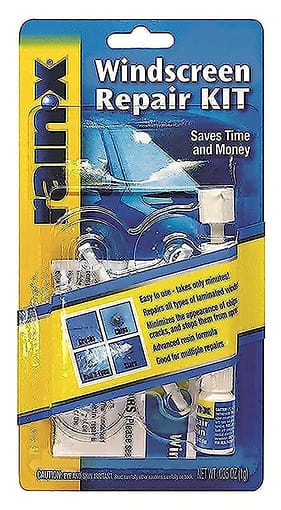So, you’ve decided to take on some DIY projects around the house to save some money and add a personal touch to your space. That’s great! But before you grab that hammer and start swinging, it’s important to consider how to prevent accidents during your DIY adventures. From wearing protective gear to properly handling tools, this article will provide you with practical tips and tricks to ensure your DIY projects go smoothly and safely. So, let’s get started and make sure you’re ready to tackle those projects without any mishaps!

Wear Appropriate Safety Gear
When engaging in DIY projects, it is crucial to prioritize your safety by wearing appropriate safety gear. Neglecting to do so can result in injuries that could have been easily prevented. Here are some essential safety gear items to consider:
Eye Protection
Protecting your eyes should be a top priority when working on DIY projects. Flying debris, dust particles, and chemicals present a significant risk to your eyesight. It is advisable to wear safety goggles or a face shield that provides full coverage and is designed specifically for eye protection.
Ear Protection
Many DIY projects involve the use of loud machinery and power tools, which can cause permanent hearing damage over time. To protect your ears, wear earplugs or earmuffs that provide adequate noise reduction. It is essential to prioritize your hearing health by using ear protection consistently.
Dust Mask
Inhaling dust and other airborne particles can have adverse effects on your respiratory system. When working with materials that generate dust, such as wood, drywall, or concrete, wear a dust mask or respirator to filter out harmful particles. Ensure that the mask fits snugly to prevent any particles from entering your airways.
Gloves
Using gloves can offer protection against various hazards, such as sharp objects, chemicals, and hot surfaces. The type of gloves you should use depends on the nature of the project. For instance, when handling sharp tools or materials, cut-resistant gloves are recommended. Chemical-resistant gloves should be used when working with corrosive substances.
Helmet
When engaging in projects that involve overhead work or working at heights, it is vital to wear a helmet for head protection. Helmets can protect your head from falling objects and minimize the risk of traumatic brain injuries. Choose a helmet that meets the appropriate safety standards and ensure it fits properly for maximum effectiveness.
Maintain a Clean and Organized Workspace
Creating a safe and organized work environment is essential for accident prevention during DIY projects. A cluttered workspace can increase the risk of tripping, falling, or losing control of tools. Taking the necessary steps to maintain a clean and organized workspace can significantly reduce potential accidents. Here are some tips to achieve this:
Clear Clutter
Before starting any DIY project, make sure to clear the work area of unnecessary clutter. Remove any obstacles, debris, or tools that are not directly involved in the task at hand. Keeping the workspace clutter-free will provide you with more room to move safely and prevent accidents caused by tripping or falling.
Properly Store Tools
Ensure that tools are stored appropriately when not in use. Sharps tools, such as knives or saws, should be stored in secure containers or sheaths to prevent accidental cuts. Power tools should be unplugged and stored in their designated cases or cabinets to avoid unauthorized use or accidental activation.
Adequate Lighting
Proper lighting is essential for maintaining a safe work environment during DIY projects. Insufficient lighting can lead to poor visibility, increasing the risk of accidents. Prioritize adequate lighting in your workspace by utilizing overhead lights, task lighting, or portable work lights. Ensure that all areas of your workspace are well-lit to prevent any potential mishaps.
Educate Yourself and Seek Professional Advice
Actively seeking knowledge and guidance is key to preventing accidents during DIY projects. Educating yourself about proper techniques, potential hazards, and safety measures will significantly reduce the risk of injuries. Here are some ways to gain knowledge and seek professional advice:
Research and Learn
Before embarking on any DIY project, conduct thorough research about the task at hand. Utilize reliable resources such as books, online tutorials, or reputable websites to learn about the proper techniques, tools needed, and safety precautions. Understanding the project’s requirements and potential challenges will allow you to approach it with confidence and caution.
Attend DIY Workshops
Attending workshops or classes specifically focused on the type of projects you are interested in can be incredibly valuable. These workshops often provide hands-on training, guidance, and safety tips from experienced professionals. By participating in such events, you can learn proper techniques, gain practical knowledge, and develop a better understanding of potential risks associated with specific tasks.
Consult Professionals
If you are unsure about a particular DIY project or encounter unexpected challenges, do not hesitate to consult professionals. Seeking advice from experienced contractors, tradespeople, or specialists in the relevant field can help you gain valuable insights and navigate complex situations. Professional input can provide an additional layer of safety and prevent potential accidents caused by lack of knowledge or expertise.
Use Tools and Equipment Correctly
Using tools and equipment correctly is vital for both successful completion of DIY projects and personal safety. Failure to operate tools correctly can lead to accidents, injuries, or damage to property. Here are some important considerations when it comes to using tools and equipment:
Read User Manuals
Before using any new tool or equipment, carefully read the user manual provided by the manufacturer. The manual contains crucial information about proper usage, maintenance, and safety precautions. Familiarize yourself with the tool’s features, safety mechanisms, and limitations to ensure safe and efficient operation.
Inspect Tools Before Use
Before each use, inspect tools and equipment for any signs of damage, wear, or malfunction. Check for loose or damaged parts, frayed cords, or components that are not functioning correctly. Using faulty tools can result in accidents or further damage. If you notice any issues or concerns, have the tool repaired or replaced before proceeding with your DIY project.
Use Tools for Intended Purposes
Every tool or piece of equipment has a specific purpose for which it is designed. Using tools for purposes other than their intended use can be extremely dangerous. Avoid improvising or modifying tools to perform tasks they are not designed for, as it may lead to accidents or malfunction. Always use tools according to their user manual and follow established safety guidelines.

Take Precautions with Power Tools
Power tools can greatly enhance efficiency and productivity during DIY projects, but they also pose additional risks compared to manual tools. To ensure your safety while using power tools, it is important to take certain precautions:
Unplug Tools Before Maintenance
When performing maintenance or making adjustments to power tools, always unplug them from the power source. This precaution prevents accidental activation or electrocution. Additionally, it is essential to wait for the tool to come to a complete stop before performing any maintenance tasks to avoid injury from rotating parts.
Use Lockout/Tagout Procedures
If you need to leave a power tool unattended, it is crucial to use lockout/tagout procedures. These procedures involve locking the power switch or using a visible tag to communicate that the tool is not to be operated. Lockout/tagout prevents unauthorized use and reduces the risk of accidental injuries or malfunctions.
Handle Cords Safely
Proper handling of power cords is essential to prevent injuries and electrical hazards. Avoid placing cords in high-traffic areas where they can be tripped over or damaged. Use cord management techniques, such as securing cords with clips or ties, to minimize the risk of accidents caused by tangled or loose cords. Additionally, inspect cords regularly for any signs of fraying or damage and replace them if necessary to avoid electrical shock or short circuits.
Use Ladders and Scaffolding Properly
When working at heights, it is crucial to use ladders and scaffolding correctly to prevent falls and serious injuries. Improper usage of these elevated platforms can lead to disastrous consequences. Follow these guidelines to ensure safe working conditions:
Inspect Ladders for Damage
Before using a ladder, thoroughly inspect it for any signs of damage or wear. Check for broken rungs, loose screws, or bent components. A damaged ladder can collapse or fail, resulting in falls and injuries. Only use ladders that are in good condition and meet the appropriate safety standards.
Set Up Ladders on Stable Ground
When setting up a ladder, ensure that the ground is level, stable, and free of any debris or obstacles. Avoid placing ladders on slippery surfaces, uneven ground, or near open edges. Use ladder stabilizers or anti-slip devices when necessary to enhance stability. Proper stability reduces the risk of ladder tipping over or shifting during use.
Follow Safety Guidelines for Scaffolding
When utilizing scaffolding, it is crucial to follow safety guidelines and protocols. Erect scaffolding on a solid and level surface and ensure that it is properly secured. Use guardrails, toe boards, and personal fall arrest systems to prevent falls. Regularly inspect scaffolding for any damages or structural weaknesses. Only use scaffolding designed for the specific task and ensure it can support the intended load.
Be Mindful of Electrical Safety
When engaged in DIY projects that involve electrical systems or devices, it is essential to prioritize electrical safety. Electricity poses significant risks if not handled properly. Here are some important measures to follow:
Turn Off Power When Working on Electric Systems
Before conducting any electrical work, always turn off power to the circuit or equipment you will be working on. This precaution prevents electrical shocks or short circuits during your DIY project. Use circuit breakers or disconnect switches to cut off the power supply. Additionally, use voltage detectors or testing devices to confirm that the power is indeed off before proceeding.
Use Ground Fault Circuit Interrupters
Ground Fault Circuit Interrupters (GFCIs) are crucial safety devices that protect against electrical shock. Install GFCIs in areas where water and electricity may come into contact, such as kitchens, bathrooms, and outdoor outlets. GFCIs detect irregular electrical currents and quickly shut off the power to prevent accidents. Regularly test and maintain GFCIs to ensure proper functionality.
Inspect Electrical Cords Regularly
Inspect electrical cords regularly for any signs of damage or wear. Look for frayed insulation, exposed wires, or loose connections. Damaged cords can cause electrical shocks or fires. If you notice any issues, promptly replace the cord or have it repaired by a qualified professional. Additionally, avoid overloading electrical outlets and use extension cords responsibly to prevent electrical hazards.
Be Cautious with Chemicals and Hazardous Materials
Working with chemicals and hazardous materials during DIY projects requires extra caution to protect yourself and others. Improper handling or storage of these substances can result in serious health risks. When working with chemicals, keep the following considerations in mind:
Read Material Safety Data Sheets
Before using any chemical or hazardous material, thoroughly read and understand the Material Safety Data Sheet (MSDS). The MSDS provides important information about the potential hazards, proper handling, and emergency procedures related to the substance. Follow the recommended safety precautions and wear appropriate personal protective equipment (PPE) when working with chemicals.
Store Chemicals Properly
Ensure that chemicals and hazardous materials are stored in a safe and appropriate manner. Keep them in their original containers with labels intact. Store chemicals in well-ventilated areas, away from direct sunlight, extreme temperatures, or sources of ignition. Keep incompatible chemicals separate to prevent accidental reactions. Safely dispose of any expired or unwanted chemicals according to local regulations.
Use Ventilation when Working with Toxic Substances
When working with toxic or volatile substances, it is crucial to provide adequate ventilation. Open windows, use fans, or work in well-ventilated areas to minimize exposure to harmful fumes or airborne particles. If necessary, wear respiratory protection such as a mask or respirator to further reduce health risks. Prioritize your respiratory health and take appropriate precautions when dealing with potentially harmful substances.
Take Breaks and Avoid Fatigue
Engaging in long hours of DIY projects without breaks or proper rest can lead to fatigue, reduced concentration, and increased risk of accidents. To ensure your well-being and maintain a focused mindset, consider the following:
Rest and Hydrate
Take regular breaks during your DIY project to rest your body and mind. Fatigue can impair decision-making and reaction time, increasing the likelihood of accidents. Drink plenty of water to stay hydrated and replenish your energy levels. Establish a balance between work and rest to avoid overexertion and fatigue-related mishaps.
Pace Yourself
Avoid rushing through DIY projects and overexerting yourself. Set manageable goals and break the project into smaller tasks that can be achieved without undue pressure. Pace yourself and work at a comfortable speed that allows you to maintain focus and accuracy. Pushing beyond your limits can result in errors or accidents due to fatigue or lack of attention.
Listen to Your Body
Pay attention to the signals your body sends you. Recognize signs of fatigue, discomfort, or pain and take appropriate measures. If you feel excessively tired or experience muscle strain, take a break and allow your body to rest. Ignoring these warning signs can lead to accidents, injuries, or prolonged recovery times. Prioritize your well-being and listen to your body’s needs.
Stay Focused and Minimize Distractions
Concentration and focus are crucial elements of preventing accidents during DIY projects. Minimizing distractions and maintaining a focused mindset will help you complete your tasks safely. Consider the following strategies:
Avoid Using Devices while Working
Resist the temptation to use electronic devices, such as smartphones or tablets, while working on DIY projects. Engaging with devices can divert your attention from the task at hand and compromise safety. Set your devices aside or keep them in silent mode to eliminate distractions and maintain your focus.
Create a Distraction-Free Environment
Whenever possible, designate a specific area or room for your DIY projects. Minimize distractions by closing doors, turning off the television or radio, and preventing interruptions from pets or other family members. Creating a dedicated workspace that is free from unnecessary distractions will help you concentrate on the task and reduce the risk of accidents.
Stay Alert and Concentrated
Maintain mental clarity and alertness throughout your DIY projects. Avoid consuming alcohol or taking medications that may impair your judgment or concentration. Adequate sleep, proper nutrition, and staying physically active can contribute to mental alertness and enhance your ability to focus on the task at hand.
By following these comprehensive safety guidelines, you can significantly reduce the risk of accidents while engaging in DIY projects. Prioritize your safety, stay informed, and take the necessary precautions to complete your projects successfully and with peace of mind. Remember, safety should always be the top priority, and by adhering to these practices, you can enjoy the satisfaction of completing DIY projects without incident.
